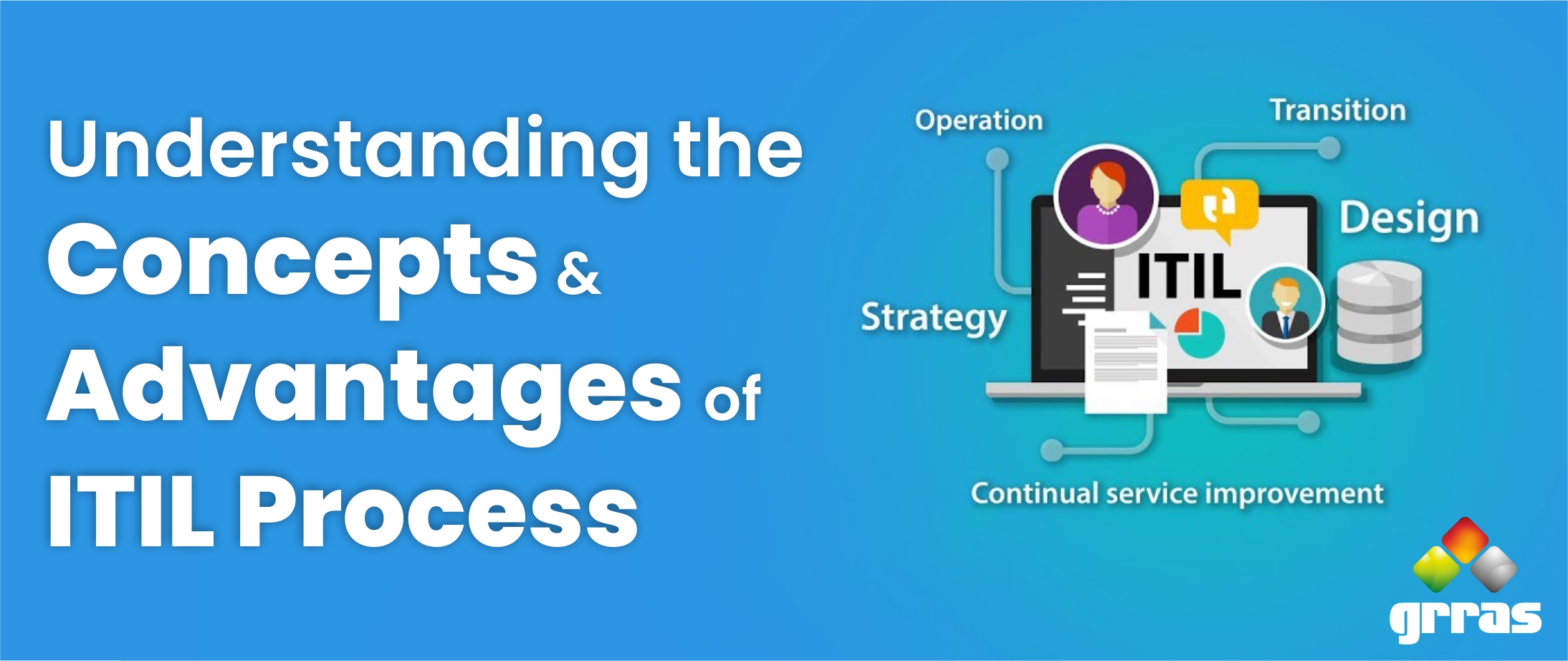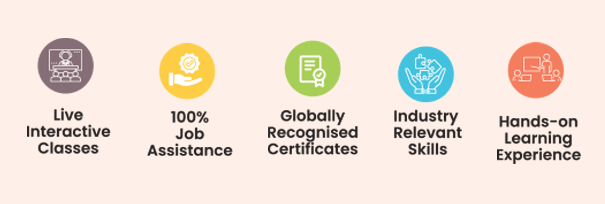In the initial years of enterprise IT, the IT department was often viewed as a money drain. The most prevalent problem was a lack of communication and collaboration within IT departments. As a result, many businesses believed that IT did not significantly contribute to organizational value and needed to support the company’s needs and goals adequately.
However, the ITIL process has decisively changed this perception. With ITIL, things started to change. Now, IT isn’t just about spending money; it’s seen as a vital part of the business. By using ITIL methods, companies can manage their tech stuff better. They may communicate and collaborate more, ensuring that the technology meets the needs of the firm.
Wondering about how ITIL may benefit your business, this blog post is just for you. This blog entails what ITIL is, how it works, and why it is useful. If you’re considering taking this course, it even discusses the various ITIL certification levels. So, whether you’re a business owner or a student trying to improve your skills, ITIL is the framework you should not avoid to learn it to take your IT business to the next level.
First things first:
What does ITIL mean?
The Information Technology Infrastructure Library helps businesses by delivering thei client needs. If we talk about what ITIL covers, it’s like a roadmap guiding businesses from start to finish. It helps them plan, set up, and run their IT stuff smoothly. And the most delightful aspect is that it’s not a set of strict bounds. It’s more of a dynamic structure that firms may adapt to their specific demands. Companies that adhere to ITIL principles can improve communication among IT departments, streamline processes, save costs, and deliver better customer service.
What are the basic concepts that ITIL covers?
The (Information Technology Infrastructure Library framework includes numerous key concepts for improving IT service management processes. Here are the main concepts as follows:-
- Service
The main idea of IITL is to ensure customers get what they need without spending or risking anything extra. It’s all about providing top-notch satisfaction and commitment without asking customers to invest or face any losses. The idea is to deliver a reliable service that meets their needs smoothly and effortlessly, giving them peace of mind and confidence in the service provided.
- Management
In ITIL, managing services entails ensuring that things function well for clients, increasing business popularity. It’s all about using resources properly to provide customers with what they want while keeping them pleased. Service management strives to manage processes and technology as a whole, with the goal of ensuring that IT services are offered, operated, and maintained as efficiently as possible.
- Lifecycle
ITIL service lifecycle has five different aspects, so let checkout them.
- Service Strategy: Sets the goals and needs for IT services to meet business demands.
- Service Design: Plans and creates new or updated services based on the goals outlined in the Service Strategy stage.
- Service Transition: Introduces services into the live environment while controlling risks and ensuring smooth implementation of changes.
- Service Operation: Handles daily service management to meet customer agreed-upon service levels.
- Continual Service Improvement (CSI): Identifies and applies ongoing enhancements to IT services and procedures to improve efficiency and effectiveness over time.
- Processes
Think of processes as practical sets of rules that assist in attaining goals. Whether for the company stakeholders or clients, Processes help offer targeted outcomes to both. It ensures an effortless transition from input to the intended output.
- Functions
Functions are the medium that propels activities forward. They bring together teams and sophisticated programs to help streamline procedures. Essentially, they are the basis for getting things done well and successfully. Whether coordinating personnel or managing complicated software functions, keep everything going correctly.
- Responsibilities
It specifies several roles to make service management more seamless. These positions may include managing areas like Service Owner, Process Owner, Incident Manager, and Change Manager. Each position is necessary to ensure that IT services fit business goals and are provided efficiently to fulfill customer needs.
- Governance
It provides direction and monitoring for efficient IT service management. Governance ensures that IT activities align with company objectives and meet regulatory standards by giving clear guidance and control.
We have understood the concepts of IITL, and with this, let’s understand what the core principles are.
What are the core ITIL Guiding Principles?
ITIL’s seven guiding principles are like a compass for companies navigating their IT services. They offer a simple yet powerful framework, helping businesses steer their technology in the right direction. These principles ensure smoother sailing, ensuring that IT supports the organization’s journey to success.
- Focus on value:
This principle stresses identifying and prioritizing activities that add real value to customers and stakeholders. It’s all about focusing on what matters most to ensure resources are well-utilized and your efforts contribute significantly to the organization’s goals.
- Start where you are:
Rather than waiting for ideal conditions or resources, this principle promotes taking action in your existing position. It focuses on using existing resources, capabilities, and expertise to jumpstart growth. By starting where you are, you may overcome inertia and make meaningful progress toward your goals, setting the groundwork for continuing improvement.
- Progress iteratively with feedback:
This idea recommends breaking down activities or projects into smaller, more manageable iterations and cycles. Working repeatedly enables you to gradually deliver value while also providing frequent opportunities for feedback from stakeholders and customers. This feedback loop enables you to improve and change depending on real-world facts, resulting in more responsive and successful outcomes.
- Collaborate and promote visibility:
Collaboration is critical to success in complicated and dynamic contexts. This idea encourages collaboration among team members, stakeholders, and other interested parties. Working together, sharing information transparently, and increasing visibility into work progress allows you to leverage the insights of the entire team. This leads to greater outcomes and stronger associations.
- Think and work holistically:
Holistic thinking takes into account the connectivity and interdependence of different parts within a system or situation. This principle allows you to recognize potential dangers, opportunities, and synergies that may not be apparent when focusing on individual components.
- Keep it simple and practical:
Complexity can often impede growth and effectiveness. The approach prioritizes solutions, procedures, and technologies that are simple and practical. Keeping things uncomplicated decreases the probability of disorientation, mistakes, and delays. Practical solutions are easier to understand, implement, and manage, resulting in higher adoption and success.
- Optimize and automate:
Continuous improvement is key for competitiveness and efficiency. It means always finding ways to do things better. This involves optimizing processes, workflows, and practices to boost efficiency, effectiveness, and quality. Additionally, it encourages automating repetitive tasks, which saves time and resources for more valuable activities.
Best Benefits of IITL that You Should Know
The expanding global demand for ITIL practitioners demonstrates that IT businesses are reaping the enormous benefits of the ITIL framework. Most IT service providers experience the following ITIL benefits:
- Tech and Business Unite:
ITIL brings together two usually separate departments—business and IT. It ensures they work together by
aligning their concerns and goals, leading to improved communication and service.
- IT Savings, No Misbehaving:
ITIL helps cut unnecessary expenses by giving clear metrics to track and manage IT spending. It prevents wasteful spending on unnecessary software or services, helping businesses stay within budget.
- Reduced Service Disruptions:
ITIL’s change management processes prevent and quickly resolve service outages. This includes applying software updates and fixing issues promptly, ensuring minimal disruptions.
- Risk Tamed:
By aligning business and IT, minimizing disruptions, and maintaining service quality, ITIL helps businesses manage and mitigate risks effectively. It establishes reliable processes to ensure consistent service quality and minimize potential risks.
- Worldwide Benchmark:
ITIL is globally recognized and provides a proven framework for building robust IT management systems and delivering high-quality customer service. Following ITIL guidelines helps businesses manage risks and meet industry standards.
- Helps in Staying Competitive:
ITIL continues to keep organizations prevailing on the latest technical changes, allowing them to remain competitive. It’s like having a roadmap to help organizations navigate the ever-changing tech landscape and avoid falling behind.
- Integration with Other Frameworks:
ITIL integrates smoothly with other project management frameworks, making it easier for enterprises to deploy and align ITIL standards with their current projects and procedures.
What are the ITIL Certification Levels?
The five-tiered ITIL certification structure gives candidates significant flexibility across multiple applications. The ITIL Qualification Scheme includes five separate levels of qualifications, each with the potential for progression and specialization.
- Foundation Level: Consider this the starting point. It helps you learn the basics of ITIL – like understanding key terms and how IT services work. It’s like knowing the ABCs of IT service management.
- Practitioner Level: Once you’ve mastered the fundamentals, this level allows you to use ITIL in practical scenarios. It’s similar to having a set of tools and approaches to increase workplace productivity and performance.
- Intermediate Level: Now, you’re diving deeper into specific areas of ITIL. You learn about different parts of managing IT services, like handling problems and using technology effectively. It’s like going from learning simple math to tackling more complex equations.
- Expert Level: You’re becoming a real pro at this stage. You’ve got years of experience, and you understand ITIL inside out. You know how to handle any IT service management challenge that comes your way.
- Master Level: This level is like achieving a black belt in ITIL. You’ve not just understood all the principles; you’ve shown you can use them in tough situations. It proves you’re a top-notch leader in managing IT services.
Pursuing an ITIL degree provides numerous opportunities to adapt your career path. Beyond conventional certification courses, you can enroll in specialized short-term programs such as ITIL Intermediate Service Strategy or ITIL Intermediate Service Transition to connect your training with your professional objectives.
To Conclude
Understanding and implementing ITIL can be challenging for corporate leaders. It’s critical to understand why ITIL is valuable and how it may help your business.
Partnering with a reputable ITIL-certified organization, such as Grass Solutions, is essential. They will walk you through the process and give any necessary training or tweaks for your team.
Grras Solution provides cost-effective and creative solutions such as business intelligence and data analytics to help you achieve your ITIL objectives. They’ll help you create goals, such as lowering costs or increasing customer happiness, and track your progress using clear metrics.
Check out their portfolio for additional information! If you’re intrigued about ITIL and how it may help your organization, contact Grras Solution for advice.






